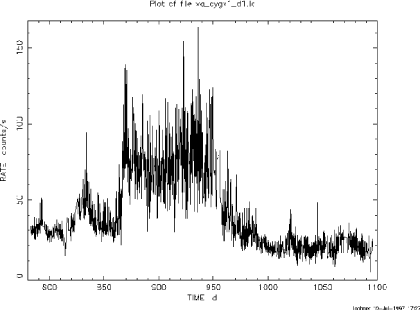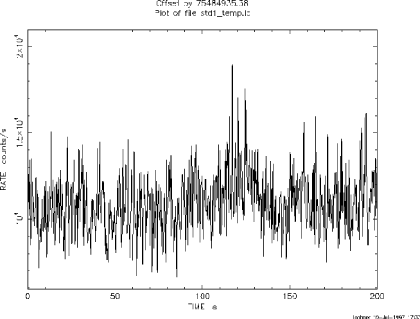|
|
The Mystery of Cyg X-1
Cyg X-1 is an interesting source whether you look at it for only a few
hundreds of seconds or a few hundreds of days. Unlike a light bulb which
emits a pretty constant amount of radiation in a certain amount of time,
Cyg X-1 is constantly fluctuating; emitting bursts of X-ray energy then
flickering and sputtering, all in an apparently random manner. In short
time scales, the fluctuations are smaller and over long time scales the
fluctuations are larger. In some events, Cyg X-1's X-ray output
doubles over a period of less than a week, remaining at a high
average for months before settling down to a more normal, lower average.
This rare kind of outburst was actually caught by XTE!! (which the
scientists were especially excited about because it gave them a great
chance to study the phenomenon!).
For a long time scientists thought
that this kind of variation on all scales was unique to black holes, but
that has since been disproved.
The plots below illustrate the X-ray variability of Cyg X-1 on both
short (a) and long (b) timescales. This data, which were taken by the
XTE satellite, is extremely robust, and the error bars are very small.
They are so small, in fact, that putting them into the plot makes it
virtually unreadable. What is most important about this fact is that
since the error bars on the data are small, we know that the observed
variations are real . They are not generated by noise
in the instruments, in other words.
(Image courtesy of Dr. Jim Lochner.

XTE data showing variability of Cyg X-1 from 780 to 1100 days

XTE data showing variability of Cyg X-1 from 0 to 200
seconds |
Return to Jim Lochner's biography
|
